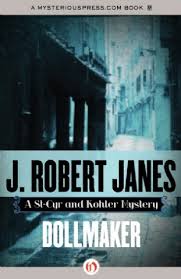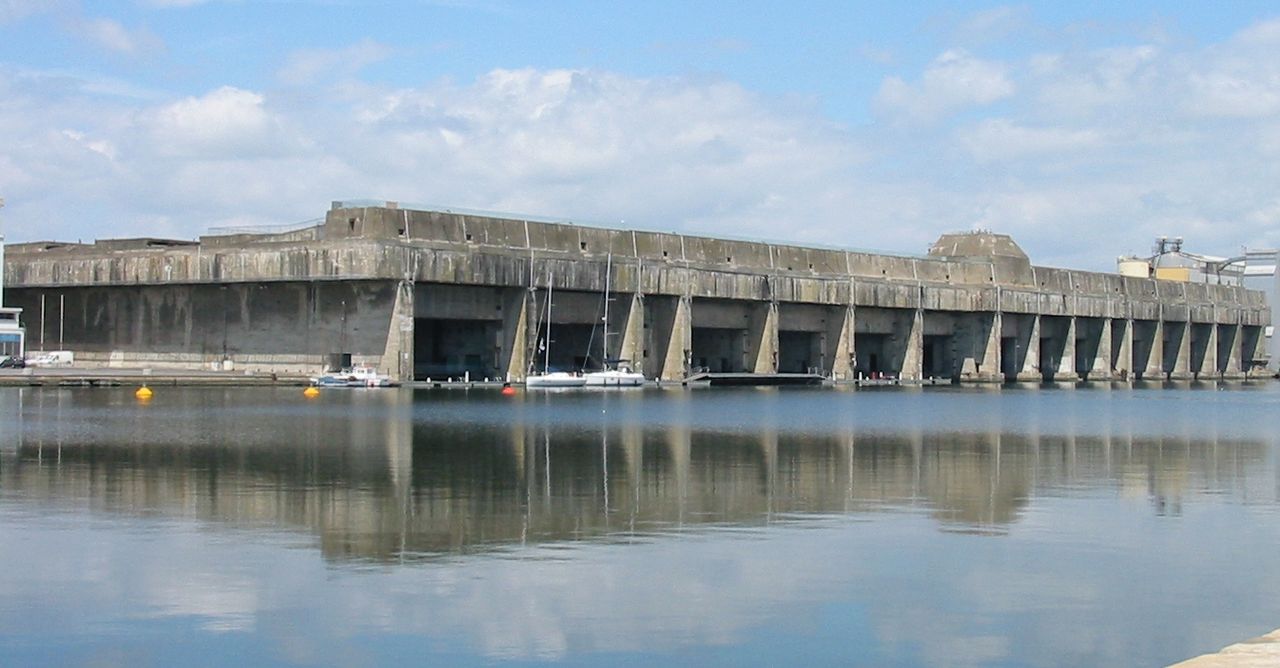Inspector Hermann Kohler and Chief Inspector Jean-Louis St-Cyr, an odd couple of Occupied France, get no rest. No sooner have they nailed a culprit than a telegram arrives ordering them on an all night dash across blacked out France to another crime scene. This time it is Lorient near Saint-Nazaire. These two ports were the principle bases for German U-Boats from 1940 to 1944.

The fateful telegram came directly from Admiral Karl Dönitz, nicknamed the Lion for his mighty bellows, commander in chief of the U-Boat fleet. Dönitz became head of the government for about three weeks after the death of Adolf Hitler. The telegram was odd in that he ordered them to investigate the allegations against the Dollmaker, per the title.
It is literal, the chief suspect is a dollmaker, who is also a very successful, and still living, U-Boat commander. Toy-making was a major German business for a long time and grew especially during the Weimar period to earn export income, because there were so many restrictions of German industries and shortages of material, wooden and clay toys were made. This captain has discovered deposits of very fine clay around Lorient and dreams of reinvigorating the family business when on leave between voyages.
A very unpleasant shopkeeper has been murdered on a cold and wet winter night along a railway embankment. Left it situ, Kohler and St Cyr arrive to investigate to the great annoyance of the local gendarme commander.
The nearby stones of Carnac provide the brooding presence of eternity for the nocturnal wanderers during the long black-out nights of winter. There are thousands of stones, some to rival Stonehenge.
With the death of the shopkeeper a great deal of money also seems to be missing, the money the dollmaker raised, mostly from his crew, to invest in a dollmaking enterprise with the deceased shopkeeper. Strangely though, as Kohler and St Cyr note, no one seems now to be worried about the money.
The suspects are many. It is surprising how many people were out and about on the railway embankment at the time of the murder. There is the shopkeeper’s daughter, who was probably spying on him for her crippled mother. There is a woman married to a musician who has gone silent. She may have been looking for her husband who roams the stones at all hour to listen to their music in the wind or for a lovers’ tryst. Their daughter was probably also out there, either to spy on her hated step-mother or to find her father. Then there is that gendarme commander who seems to have left footprints in the oddest places. The U-Boat captain was certainly there and readily admits it while denying the murder. Members of the U-Boat crew may also have been on the lookout to safeguard their investment.
As usual, claims to the Resistance are made both by the Germans to explain away the murder and exonerate the captain and by suspects to hide their guilt. Kohler is indifferent to these claims and St Cyr positively bristles because he has heard this plaint often used to cloak evil. To add to the brew there is at least one Jew hiding in plain sight and a young boy may have stolen the money to bribe passage to England to join De Gaulle. Or he may be dead. The Jew has no chance. The fatalism is endemic.
Around and around Kohler and St Cyr go questioning everyone, being told repeatedly not to question anyone least the morale of the U-Boat crew be undermined or the Resistance revealed. They are threatened, harassed, misled, and lied to. All typical. The U-Boat campaign is interrupted on every clear night by RAF bombing attacks, one of which nearly kills St Cyr, while members of the Resistance are preoccupied with setting differences among themselves with weapons dropped by the British during the distractions of the bombing raids.
 The submarine bunkers remain in tact despite the RAF bombings.
The submarine bunkers remain in tact despite the RAF bombings.
The well known fatality rate of U-Boats is sufficient to erode morale, and the Resistance is conspicuous by its absence in the tightly controlled area around the ports. Submarine connoisseurs will realise this is the area where ‘Das Boot’ opens.
Hardened kriminologist will have no trouble spotting the villain early on, but the interest in these stories is the trip, not the arrival. Lorient is a closed military zone rather like an island and its denizens know each other well, German and French. Kohler and St Cyr peel away the layers of lies, deceptions, half-truths to arrive at a conclusion or sorts. On the one hand it is a formulaic police procedure but on the other it is a study of humanity in such inhuman circumstances. The atmosphere that Janes draws is the chief interest to this reader.
Food is scarce, fuel nonexistent, warmth but a memory, tobacco beyond price, exhaustion general, rather than fear most people, German sailors or French civilians, are numb and weary. Yet the nightmare goes on and on.
The crew of the captain’s U-Boat have no desire to return to the depths, fearing they cannot beat the odds again, but if they must to back to sea, they certainly want the dollmaker at the helm and not a new officer, ergo he cannot go the slammer even if he killed the shopkeeper.

Before becoming a full-time writer, Janes taught high school mathematics.
Skip to content
